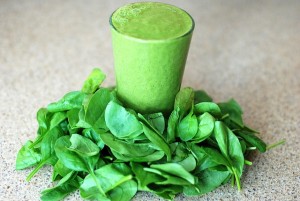- Calls to this hotline are currently being directed to Within Health, Fay or Eating Disorder Solutions
- Representatives are standing by 24/7 to help answer your questions
- All calls are confidential and HIPAA compliant
- There is no obligation or cost to call
- Eating Disorder Hope does not receive any commissions or fees dependent upon which provider you select
- Additional treatment providers are located on our directory or samhsa.gov
Is Food As We Know It Doomed?
Contributor: By Amy Klimek, MA, LCPC, Director of Program Development, Eating Disorder Program Coordinator, Timberline Knolls Residential Treatment Center
 The food pendulum is always in motion, swinging back and forth from good to bad. One day eggs are a super food; the next, they are viewed as cholesterol killers. One month, whole grain is the only way to go; the following month’s message is to avoid all things with gluten.
The food pendulum is always in motion, swinging back and forth from good to bad. One day eggs are a super food; the next, they are viewed as cholesterol killers. One month, whole grain is the only way to go; the following month’s message is to avoid all things with gluten.
Meal replacement is precisely that–it reduces food to handy bags of non-appetizing particles that are mixed with water. The idea of it taps into a person’s desire to provide their body with good solid nutrition in the shortest amount of time possible.
Ambronite and Soylent are the two most common brands in the industry today. The former appears most concerned with health, while the latter is particularly focused on time-saving. Both products are promoted as ready-to-go meals for breakfast, lunch and dinner.
The Problem with Meal Replacements
At first blush, these products have a certain appeal, appearing to be nutritionally sound. And through the website’s display of attractive visuals of grains and vegetables and the claim that each drink contains dozens of important vitamins and minerals, that notion is reinforced. But the problem remains–the meal is liquid.
The human body is designed to deal with solid food. A person chews food, swallows, then all the digestive juices from the mouth and stomach go about their work of breaking the food down—a process that has endured for millions of years.
Enter days, weeks or months of simply drinking liquid. This is contrary to how the body was created to function. It is no wonder that extreme diarrhea or constipation can result. And it does beg the question: are all these great vitamins and minerals actually being absorbed into the system, or simply flushing out with the rest of the liquid?
The Expense of Replacing Regular Food
 What’s more, these products are not inexpensive, with a bag containing ten meals priced at approximately $80. Keep in mind, three to five “meals” are suggested each day.
What’s more, these products are not inexpensive, with a bag containing ten meals priced at approximately $80. Keep in mind, three to five “meals” are suggested each day.
Even if a person “could” drink all their meals, accept the consequences and afford the cost, why would they?
Think of the visual loss of the beautiful colors of fruits and vegetables or the exquisite intricacies of special desserts. Consider the loss of savory flavors and textures–all of which cannot be replicated in a bag.
Losing More than the Taste of Food
Perhaps most of all, think of the vast social loss. Like it or not, much of our socializing is conducted around food—a lunch date with a friend, a coffee break with a colleague, a quiet dinner with a loved one. All would be sacrificed. And to what end: saving time?
These products are billed as a method to simplify life. If someone is too busy to eat a meal three times a day, 7 days a week, then that person is just too busy. Their life is out of balance, probably not sustainable. They will need a lot more to fix it than food in a bottle.
Community Discussion – Share your thoughts here!
What are your thoughts on the benefits of whole food nutrition?
The opinions and views of our guest contributors are shared to provide a broad perspective of eating disorders. These are not necessarily the views of Eating Disorder Hope, but an effort to offer discussion of various issues by different concerned individuals.
Last Updated & Reviewed By: Jacquelyn Ekern, MS, LPC on December 18th, 2014
Published on EatingDisorderHope.com

